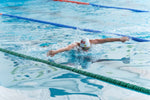
Protein and Swimming Strength Training: Building Power
, by Sandesh Prasannakumar, 13 min reading time
Stay tuned, Your Favourite supplements will be back in stock soon!
Stay tuned, Your Favourite supplements will be back in stock soon!
Stay tuned, Your Favourite supplements will be back in stock soon!
Stay tuned, Your Favourite supplements will be back in stock soon!
Stay tuned, Your Favourite supplements will be back in stock soon!
Stay tuned, Your Favourite supplements will be back in stock soon!
Stay tuned, Your Favourite supplements will be back in stock soon!
Stay tuned, Your Favourite supplements will be back in stock soon!
Stay tuned, Your Favourite supplements will be back in stock soon!
Stay tuned, Your Favourite supplements will be back in stock soon!

, by Sandesh Prasannakumar, 13 min reading time
Swimming is an all-inclusive sport that not only requires cardiovascular endurance but muscular strength and power as well. For improved endurance, swimmers perform strength-training exercises, and this is a delicate process that involves a perfect blend of both exercise and diet. Integral to this is a question of protein consumption, which is necessary for muscle rebuilding and the creation of power. This article focuses on how the swimmer can include protein in building power during strength exercises in preparation to achieve the best results.
Protein is crucial in muscle tissue repair and growth or, in other words, is the basic building block of power. In strength training, muscle fibers break up minutely, and muscle demands protein to offer amino acids that can help in rebuilding and enlargement. This process is referred to as muscle protein synthesis; it makes muscles larger and stronger, which is essential in creating power and is a critical component of swimming.
2. Supporting RecoveryProtein also helps avoid or minimize muscle rigidity and speeds up the muscle repair process. Swimmers are able to train for a longer amount of time since there is a quicker recovery time, which helps keep their performance enhanced without having to sit out because of muscle pull or any other kind of injury.
3. Energy SupplyCarbohydrates are the main source of energy, while protein helps to sustain energy, protecting the muscles from breaking down, especially during heavy training periods. A sufficient amount of proteins also makes the body rely on the stored fat and carbohydrates to provide energy rather than using the muscular tissues.
Swimmers should incorporate strength training programs that can build general strength, power, & endurance. Here are essential exercises that complement swimming-specific strength needs:
1. SquatsImportance
Squats are fundamental for building lower body strength. They are crucial for powerful starts and turns in swimming.
How to Perform
Importance
Deadlifts target the posterior chain. This includes the hamstrings, glutes, and lower back. Such movements can enhance core strength and stability.
How to Perform
Importance
Pull-ups develop upper body strength, particularly in the back and shoulders. This is critical for the pull phase in swimming strokes.
How to Perform
Importance
The bench press strengthens the chest, shoulders, and triceps. These contribute to powerful strokes and propulsion in the water.
How to Perform
Importance
Planks enhance core stability and strength. They are essential for maintaining a streamlined body position and reducing drag while swimming.
How to Perform
Importance
Medicine ball slams improve explosive power and coordination. This is beneficial for quick and powerful movements in swimming.
How to Perform
Pre-Workout
Consuming protein before a strength training session can provide a steady supply of amino acids during the workout, supporting muscle repair and reducing muscle breakdown.
Recommendations:
Post-Workout
Protein intake post-workout is crucial for initiating muscle repair and growth. This is when muscle protein synthesis is most active, and the body is primed to absorb nutrients.
Recommendations:
The total daily protein intake for swimmers should support overall muscle maintenance, repair, and growth, aligned with their training intensity.
Recommendations:
High-quality protein sources provide all the essential amino acids necessary for muscle repair and growth.
Sources:
Protein supplements can be convenient for meeting daily protein needs, especially post-workout or when whole-food options are not available.
Types:
Gradually increasing the resistance or intensity of strength training exercises ensures continuous muscle adaptation and growth.
Implementation:
Regular and consistent strength training is essential for building and maintaining muscle power. Irregular training can lead to stagnation or loss of strength.
Implementation:
Incorporating a variety of exercises targets different muscle groups and prevents plateaus.
Implementation:
Adequate rest and recovery are crucial for allowing muscles to repair and grow, reducing the risk of injury and overtraining.
Implementation:
For swimmers, combining strength training with adequate protein intake is key to power building and optimal performance in the water. By understanding the role of protein in muscle repair and growth, and implementing effective strength training strategies, swimmers can enhance their power, speed, and endurance. Balancing exercise with proper nutrition, rest, and recovery creates a comprehensive approach to achieving peak performance. Embrace these principles to maximize your swimming potential and enjoy the benefits of a well-rounded training regimen.
For all your protein and supplement needs, visit Genetic Nutrition!